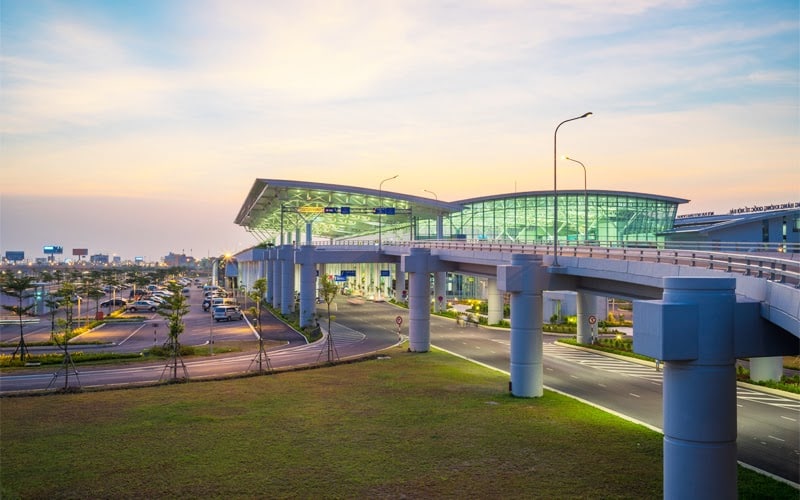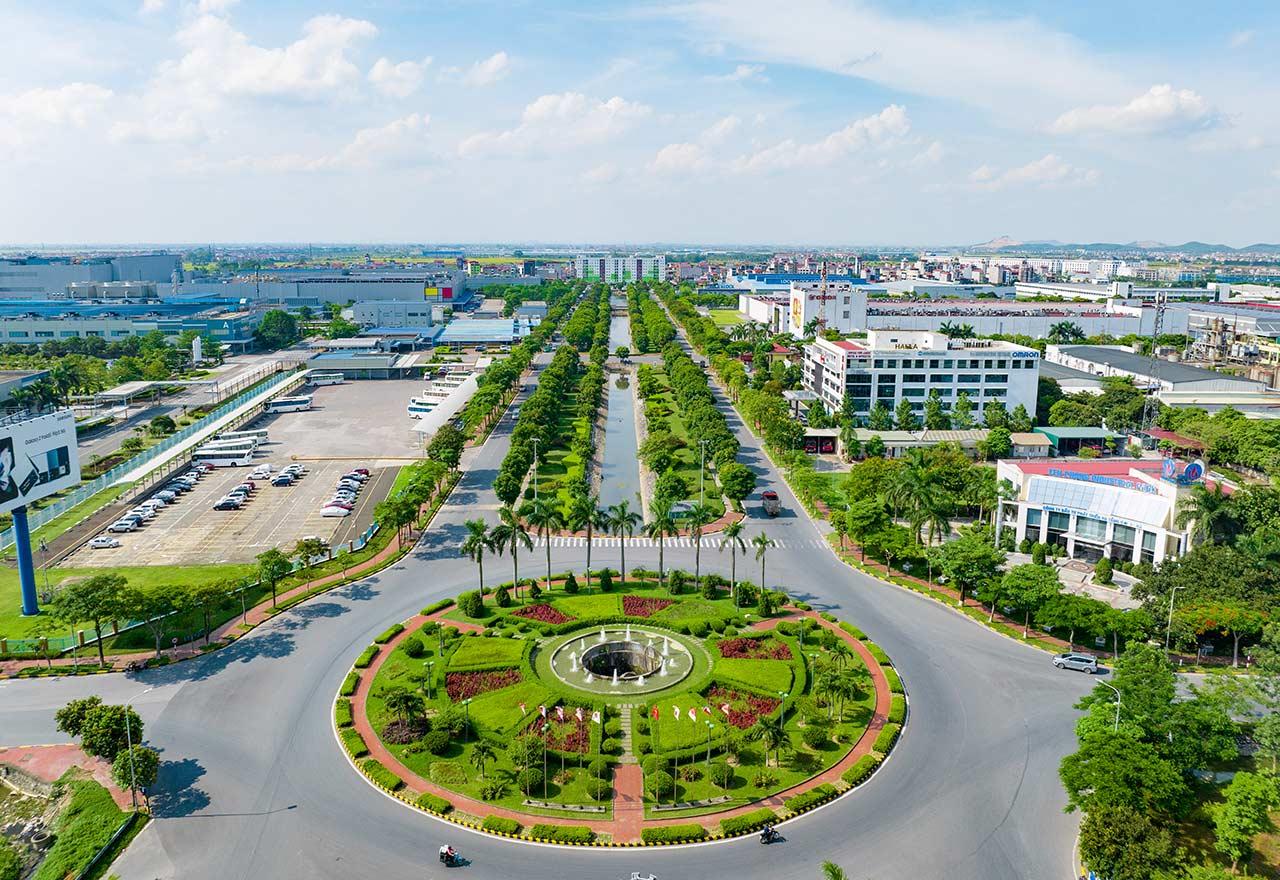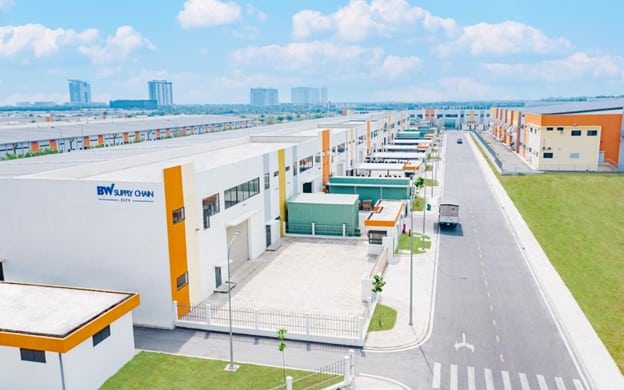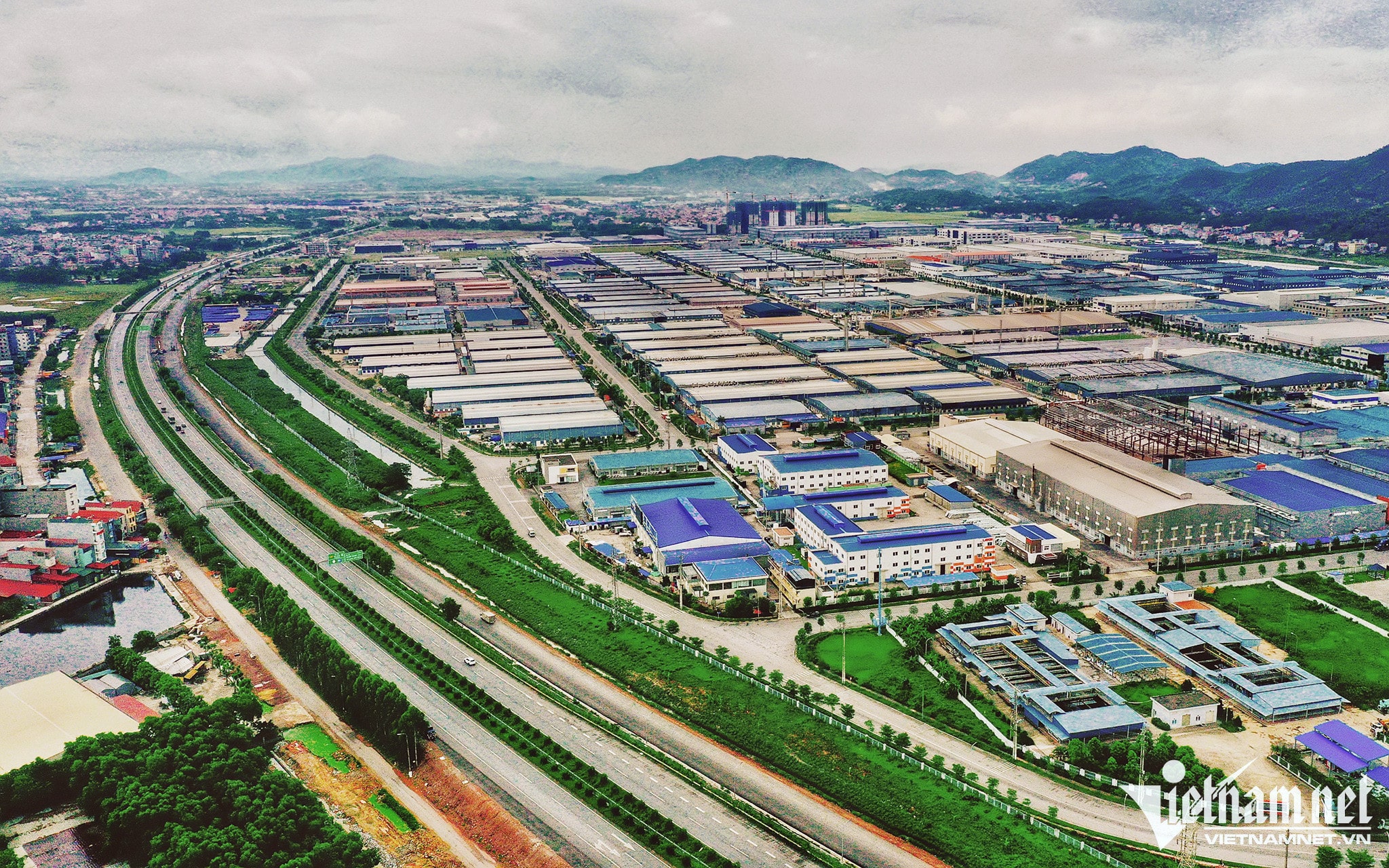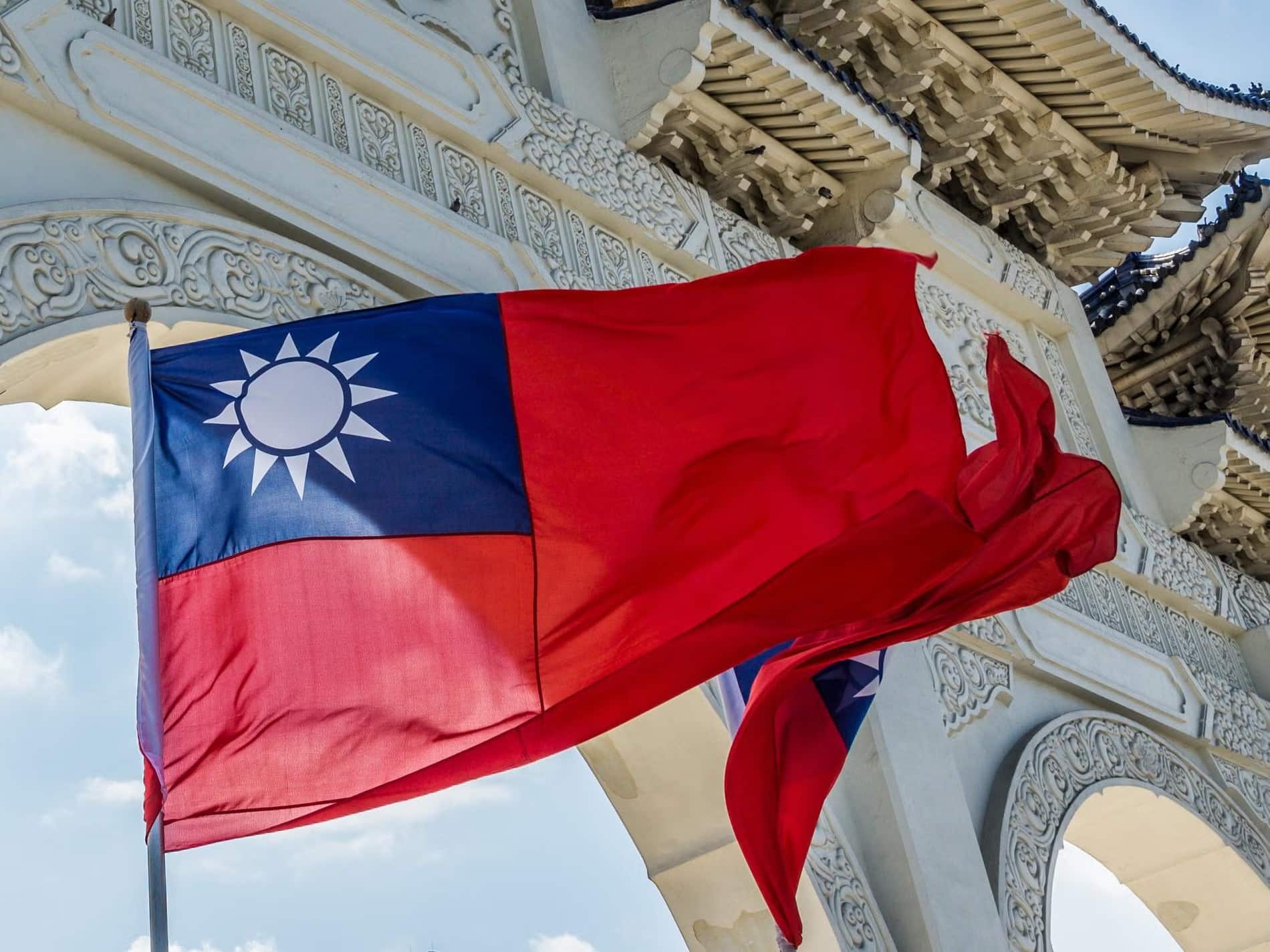Warehousing and storage facilities are critical components of the whole supply chain process. In the warehousing and storage industry in Vietnam, companies have been observed to employ a warehouse management system that allows multi-location management through effective order management, auto-refilling of inventory, auto-generating purchase orders for supplies, and getting automatic updates against inbound orders.

Industrial Land 9M/2021
Viet Nam has 394 industrial parks (IPS) with a total natural land area of 121,900 ha as of May 2021. There are 286 operational IPS (producing 3.78 million direct jobs) with a 71.8 percent occupancy rate, down from 74 percent last year. In the first half of 2021, 25 new industrial parks were built, marking a 19 percent increase over the same period in the previous year.
Due to the inability of overseas investors and renters to visit, select assets, and sign lease contracts, industrial developers have not leased as much property as they had intended this year. However, new industrial zones and projects will increase essential supply in 2021.
According to John Campbell, Manager of Industrial Services at Savills Vietnam, occupancies increased in some provinces but stayed largely stable overall. Lockdowns and travel restrictions have hindered the predicted rush of relocations out of China in 2021. On the other hand, developers believe that 2022 will be more successful in leasing; renters and investors will also pick up a fresh supply after the limits are abolished.
Dozens of industrial zone projects were approved in 13 cities and provinces in Q1/2021, promising thousands of hectares to meet future demand. Bac Ninh has the most projects, with five forthcoming IPS, including the 208.54ha Que Vo III IZ, which has a total investment of $120.9 million and $172.2 million, and the 250ha Gia Binh II IZ, which has a total investment of $120.9 million and $172.2 million.
New developments in Quang Tri include the 481.2ha Quang Tri IZ, which has a $90.2 million investment, and the 529ha Trieu Phu IZ, which has a $90.2 million investment. Vinh Phuc will develop 500 acres and have various other projects planned. Several new projects are currently under construction in Hai Duong, Vinh Long, Quang Nam, Thua Thien Hue, Nam Dinh, and Nghe An provinces.

Three more IPS will add 6,475ha to the South, supplementing the existing IPS. The 253-hectare Long Duc 3 IP and the 2,627-hectare Bau Can-Tan Hiep IP will be located in Long Thanh district, while others will be found in the 3,595-hectare Xuan Que – Song Nhan IP. These IPS contribute to the country’s 2030 strategy by emphasizing the development of high-tech industrial zones.
Long An anticipates a new $59 million, 119-hectare IP project, Century Industrial Park, constructed by Hai Son Co Ltd., in Duc Hoa District. Long An will have around 1,500 ha of more cleared land in its IPS to capitalize on growing Vietnamese FDI flows in 2021. The province’s most significant foreign investments concentrate on textiles and apparel, footwear, animal feed, poultry, fish, food processing, drinks, and manufacturing.
Rental Developers M&As
M&A activities increased in 2021. Boustead Projects’ projected 49 percent stake in KTG and Boustead Industrial Logistics JSC were notable transactions. The partnership will include 13 real estate seed assets totaling US$141 million and comprising approximately 840,000 m2 of land area and around 550,000 m2 of gross leasable area.
ESR Cayman Limited and BW Industrial Development JSC (BWID) have formed a joint venture (JV) to develop 240,000 m2 in the My Phuoc 4 IP, near HCMC. The collaboration marks ESR’s launch into Vietnam, broadening the company’s Asia-Pacific footprint.
In terms of new developments, Logos Property’s 81,000 m2 project in VSIP Bac Ninh 1 Logistics Park is scheduled for completion in Q4/2021. The SEA Logistic Partners (SLP) and GLP joint venture have broken ground on the 89,000 m2 GFA SLP Park Hai Phong. KCN Viet Nam Group JSC, a new player, paid US$300 million for 250 acres of the land bank.
They aspire to construct quality, sustainable industries, and warehouses for rent with a nationwide portfolio, including Bac Giang, Hai Phong, Hai Duong, Dong Nai, and Long An.

Sale-Leasebacks
Much of the industrial property sector activity in 2020 and 2021YTD has centered around Vietnamese enterprises expanding or relocating production, with the emergence of distressed properties and facilities for sale-leaseback.
The sale-leaseback approach, which involves converting industrial real estate into cash by selling the property and leasing it back, is becoming a wiser and more practical choice for firms.
During the pandemic, we saw more manufacturers and logistics companies evaluate the overall worth of their real estate assets to raise capital without affecting operations. Although this strategy is still underutilized in Vietnam, it should be regarded as a low-cost alternative to high-interest bank loans.
In Vietnam, sale-leaseback transactions are still underutilized. DKSH’s warehouse in Binh Duong was the first high-profile sale-leaseback in Viet Nam’s industrial market in 2017.
Savills Vietnam successfully negotiated the sale-leaseback of a 36,000 m2 GFA warehouse in Di An in 2020. As the trend continues, interested parties are aggressively pursuing industrial leasebacks.

Cold Logistics
With Asia’s increasing middle class and mature economies, demand for products like safe and high-quality food will continue to rise, with the exponential growth of Viet Nam’s grocery market and modern retail trade being major cold storage drivers.
Viet Nam’s cold chain logistics are expanding, and predictions predict that they will be worth US$295 million by 2025, with a 12 percent annual growth rate. Despite rising demand, cold storage facilities are few, with only 48 available in 2019. Long construction durations and expensive expenses have resulted in restricted supply and significant rent hikes ranging from US$52 per tonne in early 2020 to US$87 per tonne in 2021.
APAC countries had much less cold storage capacity per urban capita in 2018 than North America and the United Kingdom. Japan had the largest APAC capacity, with 0.315 cubic meters per urban resident.
The cold chain market in Vietnam is mainly separated into two segments:
- Approximately 600,000 pallets are stored in cold storage.
- Provide cold transportation with over 700 refrigerated vehicles and a terminal track.
Modern trade retail is a crucial driver for the industry, as the food sector accounts for around 80% of total demand. The market is currently fragmented; however, increased demand will almost certainly lead to consolidation in cold transportation, establishing key businesses such as ABA Cooltrans and Tan Bao An.
Cold logistics are more developed in the South due to significant demand from food goods, seafood, and retail. However, the North market experienced a recovery in 2015, with designed capacity increasing from 26,750 pallets in 2015 to 71,750 pallets in 2016. (2018).
Local players dominate supply, but international players such as Emergent Cold, PFS, and LOTTE Logistics dominate quality, management, and value-added services such as different temperature zones (frozen, chilled), barcodes, and inventory management systems.
In 2019, the leading cold storage providers were 16 Mekong Logistics of Minh Phu–Gemadept, ABA Cooltrans, Emergent Cold, and Hoang Lai Group, each with a capacity of 45,000–50,000 pallets.
The primary components are commercial cold storage and self-operating facilities, with the seafood processing sector leading the self-operating market. From 2009 to 2019, the total import value of frozen fish increased from approximately US$195 million to about US$828 million; the import value of frozen shrimp and prawns increased from around US$72 million to approximately US$705 million, demonstrating Viet Nam’s potential as a seafood processing outsourcing hub.

Covid Takes on Cold Logistics
Despite increased investment and extension of cold storage facilities by local and international developers over the last three years, the spike in e-commerce is placing Viet Nam’s limited cold storage facilities under strain.
In late 2019, the country had only 48 cold storage facilities with a total capacity of 600,000 pallets. They were already at 80% occupancy at the time. Cold storage had to operate at full capacity because of the cancellation of port export orders during the pandemic’s height in 2021.
While some large enterprises invest in their storage systems, small and medium-sized businesses rely on the saturated leasing market. However, because the pandemic has altered consumer behavior, investors have a massive opportunity to build the cold storage sector to meet anticipated demand.
Outlook for the Vietnam Warehousing and Storage Industry
Over the projected period, the Vietnam warehousing market is expected to earn USD billion in revenue due to increased demand for storage services due to a shortage of suitable capacity in ports, IDC, and CFS.
Rising cross-border trade activity between Vietnam, Laos, and Cambodia will help the Vietnamese warehousing industry meet its storage needs. The Vietnam warehousing market is estimated to earn USD billion in revenue by the end of 2022, expanding at a CAGR of percent over the forecast of 2022.

Contact the best warehousing and storage agent in Vietnam
Currently, not all logistics facilities are located near ports or industrial centers. As a result, new warehouses and distribution facilities will need to be built closer to key hubs, such as Hanoi, Hai Phong, Da Nang, and Ho Chi Minh City, to simplify the flow of products.
Savills Industrials Vietnam, one of Savills’ best industrial real estate agents and warehousing and storage industry experts, offers customised lease and investment advice to occupiers, developers, and investors. Savills Industrials’ objective is to provide trustworthy advice, financial assistance, and industrial consulting services.
Mr. John Campbell, Savills Industrial Manager, is spearheading the endeavor. He has negotiated several leases, factory purchases, and sales and leasebacks. John and his dynamic team provide Landlord Advisory, Tenant Representation, Strategic Leasing, Investment Brokerage, and Sales & Leaseback services to customers from all disciplines.




